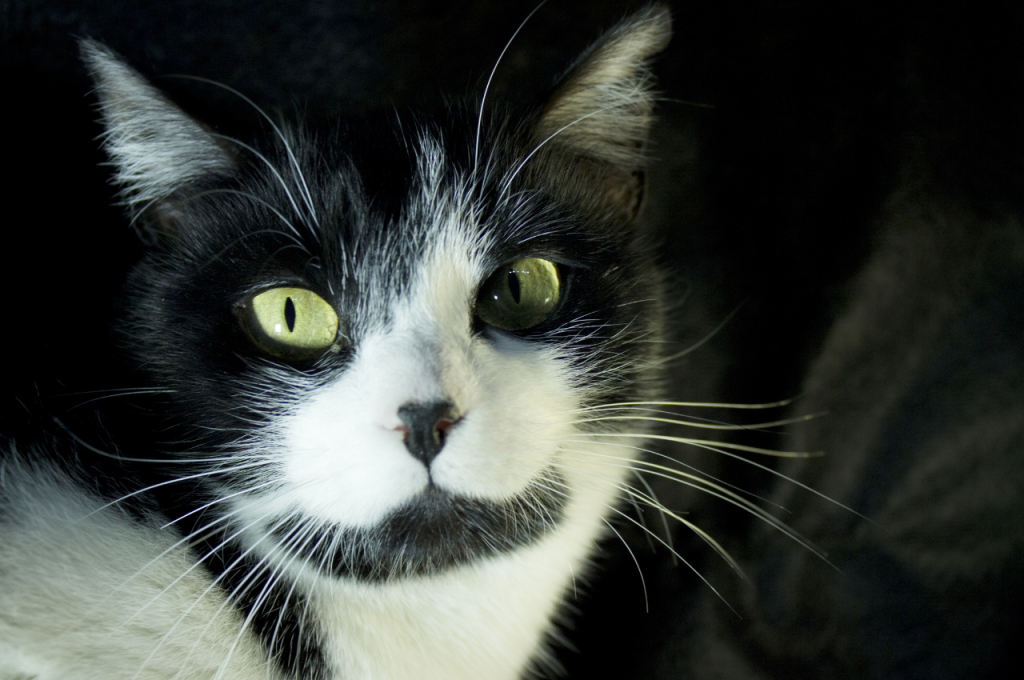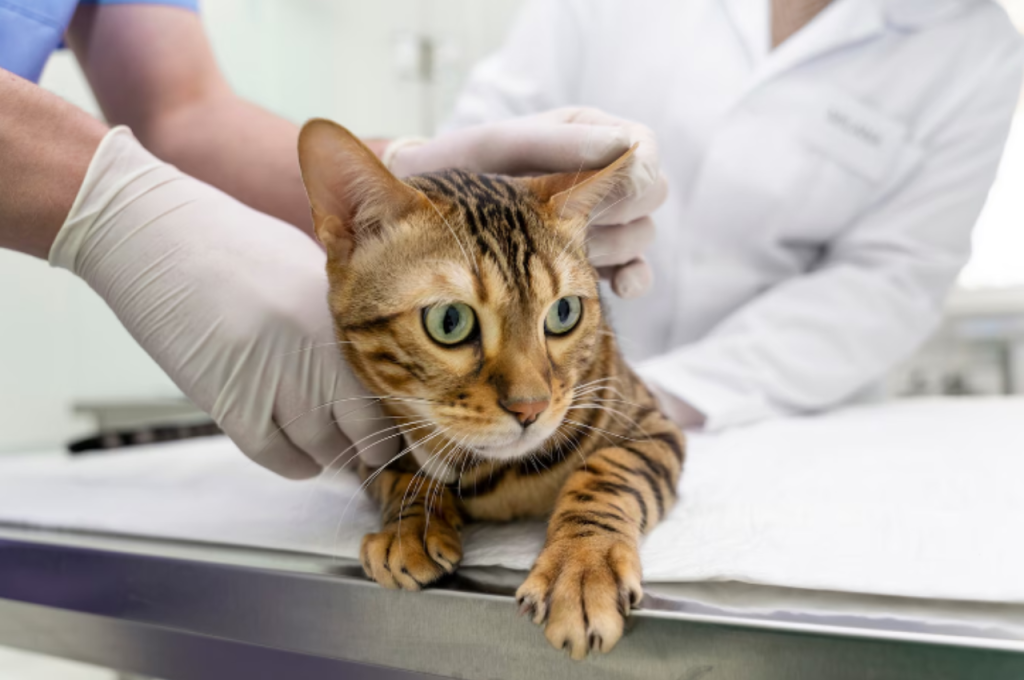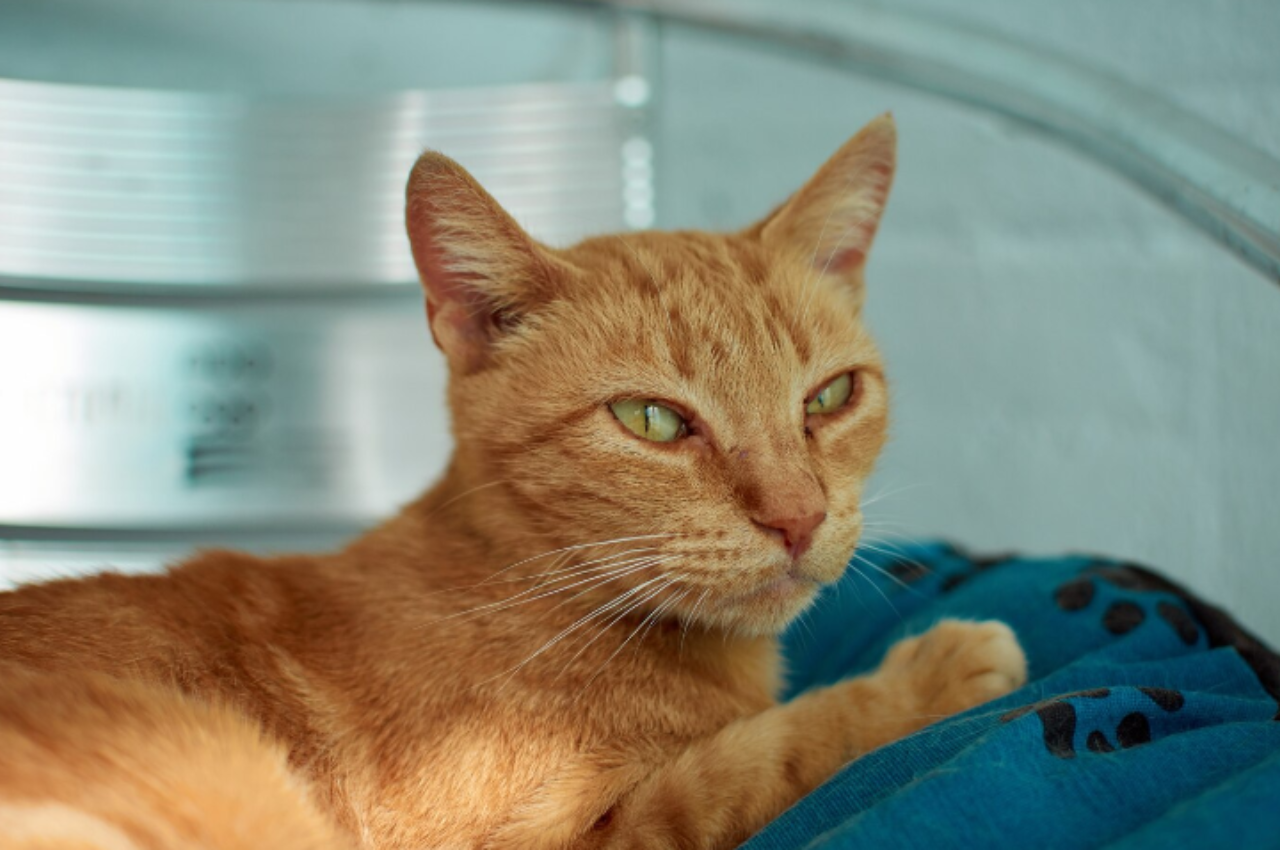Feline leukemia symptoms include weight loss, lethargy, anemia, and a weakened immune system. These symptoms may appear gradually or suddenly, and affected cats may also experience recurring infections, diarrhea, and vomiting.
Feline leukemia is a contagious virus that can be transmitted through direct contact with infected cats, so it’s important to take preventative measures such as vaccinating cats and keeping them indoors. Feline leukemia is a viral disease that affects cats of all ages and breeds. While some cats may show no symptoms, others may display a range of symptoms that can be easily overlooked. In this blog post, we’ll explore the common symptoms of feline leukemia and discuss how to prevent and treat this disease. By understanding the signs of feline leukemia, you can help ensure the health and well-being of your feline friend.
Introduction to Feline Leukemia
Feline Leukemia symptoms include weight loss, lethargy, anemia, and respiratory issues. Additionally, cats may show signs of fever and poor coat condition. Regular veterinary check-ups can help in early detection and management of this disease.

The Basics
Feline Leukemia, also known as FeLV, is a viral infection that affects cats worldwide. It is one of the most common infectious diseases in felines and can be a significant health concern for cat owners. FeLV is caused by the feline leukemia virus, which can be transmitted from one cat to another through close contact, such as sharing food bowls, mutual grooming, or through bites.
Why Early Detection Matters
Early detection of feline leukemia is crucial for several reasons. Firstly, identifying the infection early on allows for prompt treatment, which can help manage the symptoms and improve the cat’s overall quality of life. Secondly, cats infected with FeLV can transmit the virus to other cats, so early detection can help prevent the spread of the disease within a household or community.
Common Symptoms Of Feline Leukemia
Recognizing the symptoms of feline leukemia is vital in identifying and managing the infection. While some cats may show no signs at all, others may exhibit various symptoms, including:
- Loss of appetite and weight loss
- Enlarged lymph nodes
- Lethargy and weakness
- Recurring infections
- Fever
- Pale gums
- Diarrhea
- Respiratory issues
- Jaundice
- Seizures
It is important to note that these symptoms can also be indicative of other health conditions, so it is crucial to consult with a veterinarian for an accurate diagnosis.
Prevention and Vaccination
Prevention is key when it comes to feline leukemia. Vaccination is available to protect cats from contracting the virus. Kittens should receive their initial FeLV vaccination series starting around eight to nine weeks of age, followed by booster shots as recommended by a veterinarian. Additionally, keeping cats indoors and avoiding contact with stray or untested cats can help reduce the risk of exposure to the feline leukemia virus. Feline leukemia is a serious viral infection that can have detrimental effects on a cat’s health.
Understanding the basics of FeLV, the importance of early detection, and recognizing the common symptoms are crucial for cat owners to ensure the well-being of their feline companions. By staying informed and taking preventive measures, cat owners can help protect their beloved pets from the risks associated with feline leukemia.
Recognizing Early Symptoms
Early symptoms of feline leukemia may include loss of appetite, weight loss, lethargy, and recurrent infections. Additionally, cats might also experience pale gums, fever, and swollen lymph nodes. Regular veterinary check-ups can help in early detection and management of this condition.
Feline leukemia is a serious and contagious disease that affects cats worldwide. Recognizing the early symptoms of feline leukemia is crucial for timely intervention and management of the condition. Keep a close eye on your feline friend and watch out for the following signs that may indicate the presence of feline leukemia.
Loss of Appetite
One of the early symptoms of feline leukemia is loss of appetite. If your cat suddenly shows disinterest in food, it could be a red flag for the presence of this disease. Monitor your cat’s eating habits closely and consult a veterinarian if you notice a significant decrease in appetite.
Weight Loss and Poor Coat Condition
Weight loss and poor coat condition are other early signs of feline leukemia. If your cat experiences unexplained weight loss or if you notice a deterioration in the quality of their fur, it could be indicative of an underlying health issue such as feline leukemia. Keep an eye out for these physical changes and seek professional guidance if observed. Early detection of these symptoms can lead to prompt veterinary care, potentially improving the prognosis for cats affected by feline leukemia. Regular check-ups and vigilance are essential in safeguarding the health and well-being of your feline companion.
Behavioral Changes
Behavioral changes are one of the key indicators of feline leukemia, signaling potential health issues in cats. These changes can be subtle at first, but it’s important for cat owners to be aware of them to ensure early detection and treatment. Keep an eye out for the following behavioral changes in your feline companion.
Increased Lethargy
Felines with feline leukemia may display increased lethargy, appearing more tired and less energetic than usual. They may seem disinterested in interacting with their surroundings or engaging in usual activities. This notable drop in energy levels could signal an underlying health concern.
Reduced Interest in Play
Cats infected with feline leukemia may show a reduced interest in play. They might not engage in playful activities that previously brought them joy. This change in behavior can be indicative of an underlying health issue that requires attention.
Physical Health Indicators
Feline leukemia can present with various symptoms, including weight loss, decreased appetite, lethargy, and pale gums. Other signs may include frequent infections, enlarged lymph nodes, and respiratory problems. Regular veterinary check-ups and testing are crucial to detect and manage this disease early on.

When it comes to feline leukemia, there are several physical health indicators that cat owners should be aware of. These symptoms can help identify the presence of the virus and prompt early intervention and treatment. In this section, we will discuss two key physical health indicators of feline leukemia: persistent fever and enlarged lymph nodes.
Persistent Fever
One of the most common physical health indicators of feline leukemia is a persistent fever. Cats with feline leukemia often experience an unexplained increase in body temperature that lasts for an extended period of time. If your cat has a fever that persists for more than a few days, it could be a sign of feline leukemia.
Enlarged Lymph Nodes
Another physical health indicator of feline leukemia is the enlargement of lymph nodes. Lymph nodes are small, round structures located throughout the body that play a crucial role in the immune system. In cats with feline leukemia, these lymph nodes may become swollen and palpable. Common areas where lymph nodes can be easily felt include the neck, under the chin, and behind the knees. To identify whether your cat’s lymph nodes are enlarged, gently feel these areas with your fingers. If you notice any abnormal swelling or lumps, it is advisable to consult with a veterinarian for further evaluation.
In conclusion, persistent fever and enlarged lymph nodes are two significant physical health indicators of feline leukemia. If you observe these symptoms in your cat, it is crucial to seek veterinary assistance promptly. Early detection and appropriate treatment can greatly improve the prognosis and quality of life for cats affected by this viral disease.
Gastrointestinal Issues
Gastrointestinal issues are common symptoms of feline leukemia and can significantly impact a cat’s overall well-being. These issues can manifest in various ways, including diarrhea and vomiting.
Diarrhea
Diarrhea is a prevalent gastrointestinal symptom in cats with feline leukemia. It can range from mild to severe and may be accompanied by other signs of gastrointestinal distress, such as dehydration and lethargy.
Vomiting
Vomiting is another gastrointestinal symptom that cats with feline leukemia may experience. It can occur sporadically or persistently and may be associated with other symptoms, such as weight loss and loss of appetite.
Respiratory Symptoms
Feline leukemia can present with respiratory symptoms such as sneezing, nasal discharge, and difficulty breathing. These symptoms can indicate a serious underlying illness and should prompt a visit to the veterinarian for proper diagnosis and treatment.
Difficulty Breathing
- Feline leukemia can manifest in cats as difficulty breathing due to respiratory issues.
- It can be a sign of the virus impacting the cat’s respiratory system.
Persistent Cough
- A persistent cough in cats can also indicate feline leukemia.
- Cats may exhibit coughing as a result of the virus affecting their respiratory health.
Oral Health Signs
Feline leukemia can manifest through various oral health signs that can indicate underlying health issues in cats.
Pale Gums
Pale gums in cats can be a concerning sign and may indicate underlying health issues, such as feline leukemia. Feline leukemia, a serious viral disease, often affects a cat’s oral health, leading to symptoms like pale or white gums due to anemia. Regularly checking your cat’s gums for color changes is crucial in detecting potential problems early. If you notice pale gums, along with other symptoms like lethargy, weight loss, or recurring infections, it’s essential to consult a veterinarian promptly. Early detection and treatment can significantly impact your cat’s health and quality of life.
Mouth Ulcers
Mouth ulcers are a significant oral health sign that could indicate underlying issues, including feline leukemia. Symptoms of feline leukemia often include persistent mouth ulcers, along with signs like inflamed gums, drooling, and difficulty eating. These ulcers can cause discomfort and lead to a decrease in appetite, impacting your cat’s overall health. If you notice any of these symptoms, it’s crucial to consult a veterinarian for a thorough examination and testing. Early detection of feline leukemia is essential for managing the disease and ensuring your cat receives the appropriate care. Regular oral health checks can help in identifying these symptoms early, leading to better outcomes.
When to Seek Veterinary Care
If your cat shows symptoms such as weight loss, lack of appetite, or pale gums, it’s crucial to seek veterinary care immediately. Feline Leukemia can also cause infections, anemia, and lymphoma. Early detection and treatment are essential for your cat’s well-being.

Scheduling Regular Check-ups
- Regular check-ups are essential to detect feline leukemia early.
- Preventive care can increase treatment success rates.
- Vaccinations and blood tests are part of routine check-ups.
Immediate Actions for Severe Symptoms
- If your cat displays severe symptoms, seek veterinary care immediately.
- Rapid action can save your cat’s life in critical situations.
Conclusion
Understanding the symptoms of feline leukemia is crucial for early detection and treatment. By recognizing signs such as weight loss, lethargy, and poor coat condition, cat owners can provide prompt care. Regular veterinary check-ups and testing are essential for maintaining the health and well-being of feline companions.
